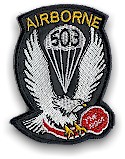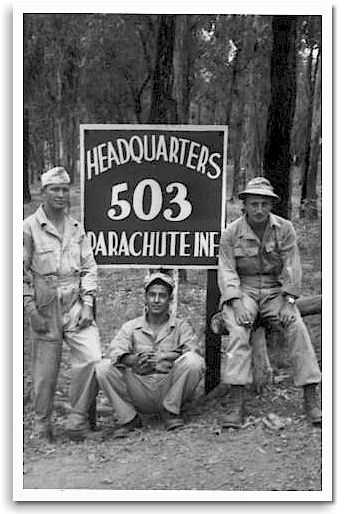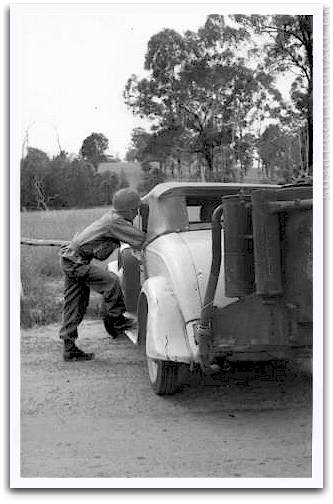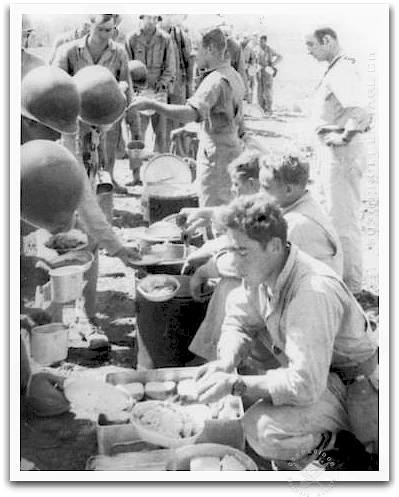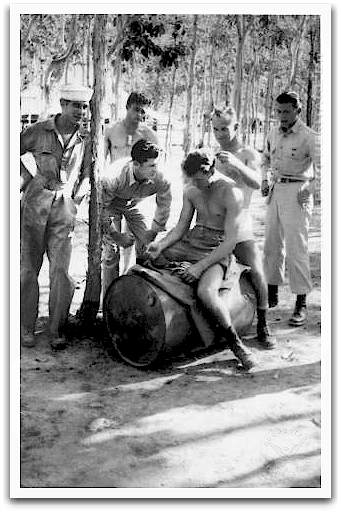|
Several months later I ran into him again. We were on leave and had
traveled to the city of Townsville for what the army calls rest and
recreation. Again he was drunk and followed me into the restroom of our
hotel and once more offered to beat the shit out of me. But this time
and this situation were different. I ignored it and him and I never saw
him again. But I have always been grateful that he was not in my company
or my platoon. Fortunately, I never had any problems like that with my
own men.
Indeed sometimes they went out of their way to avoid trouble. On one
exercise we marched for hours in the hot Australian sun, loaded with
full equipment. One man, a short fellow named Tallent, was carrying, in
addition to his regular stuff, a mortar vest. This consisted of a piece
of canvas with a hole for the head and three deep pockets front and
back. Each pocket held a large cardboard tube containing a mortar shell.
Total weight, some 43 pounds.
As we pounded along through the dust and the heat I could see that
Tallent was struggling with his load and I became concerned. So I
offered to carry the mortar vest for a while. “Oh, no thanks,
lieutenant, I can handle it.” After several similar exchanges I gave up,
knowing that nothing less than a direct order would force him to
surrender the load. It wasn't until the next day that that I learned all
those cardboard tubes were empty -- no shells! No wonder he didn't want
to give me the vest.
When did we finally leave Australia for New Guinea? I don't remember.
But I do remember that was the beginning of my greatest adventure in the
service. We set up camp near Port Moresby, then the only place in New
Guinea with any pretensions of civilization -- and not many of them I
think there was only one, permanent building in the place and that was
the governor's mansion. We lived in tents, of course, and carried on
with the same kinds of training we had in Australia, lots of tactical
exercises and climbs up nearby mountains and some live firing exercises.
This went on until the day I was summoned to regimental headquarters.
There I was introduced to a very well set-up Australian lieutenant who
greeted me with the words, "So this is the body basher!" He knew more
than I about the purpose of the introduction. The field officer who
introduced us explained that the Aussie was an artillery man and I had
about two weeks to teach him and his 28-or-so soldiers how to jump out
of airplanes and figure out how to drop their two 25-pounder guns to the
ground.
Every morning thereafter a truck delivered my Aussies to camp for
training. Fortunately, I had two excellent sergeants to help me. The
conditions were pretty primitive and so was the equipment. We built a
small platform under a tree and hung a parachute from a branch above.Of
course, we tortured our students with physical exercises and speed
marches, hoping primarily to build strength in the legs to withstand
landings. Then we hung them in the parachute harness and taught them how
to maneuver by pulling on the risers. Meanwhile, our riggers were
figuring out ways to bundle the cannon so they could be parachuted. The
Aussies were tough and willing and I soon became good friends with their
leader and his two or three fellow officers.
It seemed that we had hardly started the training when I was informed
that they were to make a practice jump. By this time they all knew how
to don a parachute and all were equipped with American steel helmets.
Australian helmets, with their sharp brims, were not suitable. They all
had made jumps off the low platform we had built and practiced limited
maneuvering while suspended in the harness. Ready or not, we had our
orders.
I'm sure they were scared, but all faced the jump with considerable
courage. We emplaned at a nearby field and took off. To my surprise we
were accompanied by a few high ranking officers, including a General
Vasey of the Australian army. It was apparent that higher ups in both
armies regarded this as an important experiment. Once over the
designated target, a cleared strip in the jungle, I stood my Aussies,
ordered them to hook up to the cable and stand in the door. Then the
command to “Go!” Every man flew out the door and all but one landed
safely. The exception was a lieutenant who broke his leg on landing. The
big guns were dropped from a following plane, but not with perfect
results. One was damaged enough so that it could not be moved around.
Nonetheless, the operation was a success. My orders were clear. When we
went into combat, it would be my job to get these men safely on the
ground.
Not long after the trial run we faced the reality of a mission. The
target was a place in the jungle called Nadzab. It was about 20 miles
inland of Lae, a major Japanese facility. September 5, 1943. Plane after
plane filled with paratroopers took off from airstrips near Moresby. In
one of those planes were my Aussie artillerymen, four officers and 28
men.
I learned later that Generals Kenney and MacArthur flew overhead in
B-17s to witness the operation, and the number of planes in the air set
a record. I was supposed to drop the Aussies about an hour after the
regiment landed, so my planes stopped for a while at a place called
Dobodura. I hadn't been told that was a scheduled part of the operation,
so I fussed and steamed until we were finally permitted to take off. |

